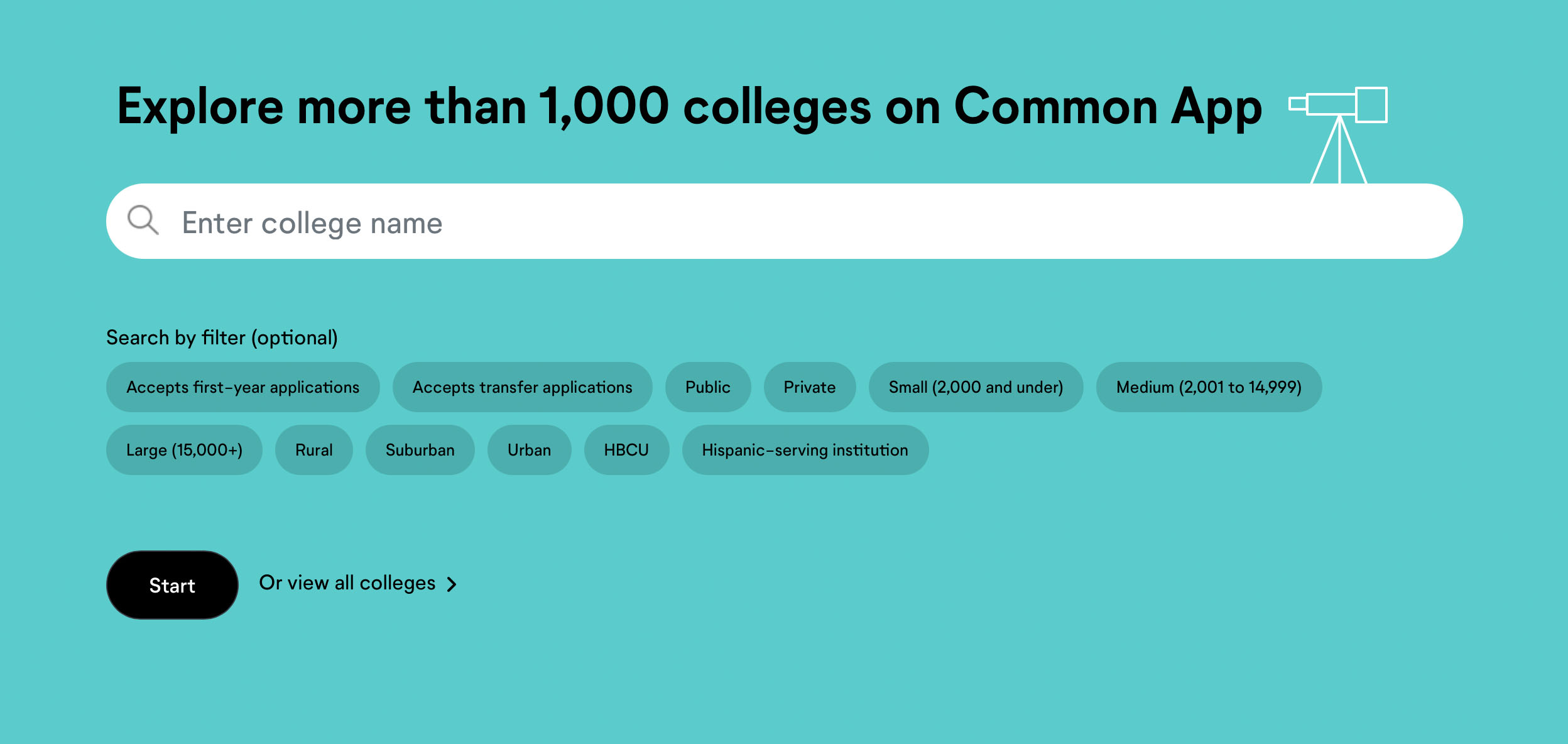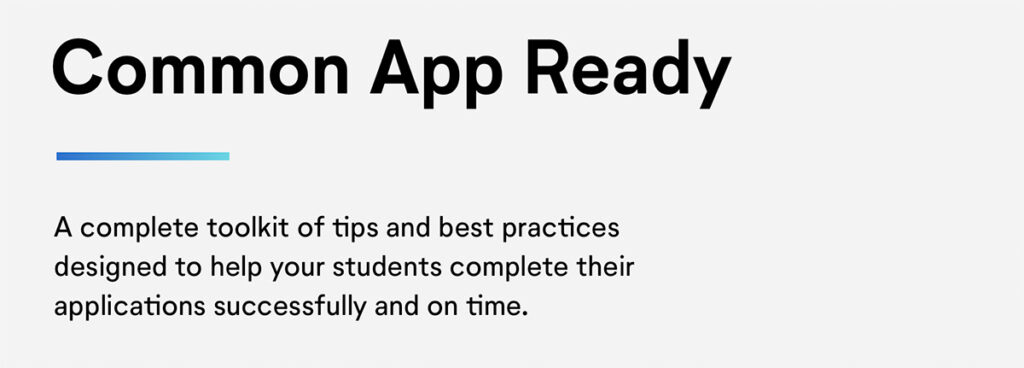Harvard Outreach Newsletter
119th Issue, July 2023
In this issue:
- Online application forms for US colleges go live on 1st August
- Two ways of applying: Common App and Coalition for College
- Tips and resources for students, teachers and recommenders
- Making the most of summer 2023
- Newsletter now available on our website
Online application forms for US colleges go live on 1st August

Most of the information in this month’s newsletter is directed at students who are at the end of, or have just left, the following year groups:
Year 12 (England and Wales)
S5 (Scotland)
Year 13 (Northern Ireland)
If you intend to apply to study in the US next year, the best time to put together your application is between now and September. The summer holidays are the ideal time to choose which application method you will use, and to put together as much of your application as possible. When you start the Autumn Term you will be very busy with your UCAS application, so the more of your American application materials you can compile beforehand, the better.
There are currently two main application platforms – the Common Application Form and the Coalition for College. Harvard and many other colleges accept both application types – but some will only accept one or the other, or have their own individual application forms. Therefore an important factor in your preparation is to find out which application methods are accepted by the colleges on your shortlist, as you will want to avoid having to complete more than one type of form, if possible.
See below for further details of the two main application methods, together with links to the relevant web pages.

Although not all US colleges accept the Common App, it is nevertheless used by over 1,000 institutions, including all the top research universities, so most applicants are likely to use this method. The Common App goes live each year on 1st August, although students may register and complete the general application components before this date. Click here to create an account.
For students, the Common App website contains an Application Guide for First-Time Students (i.e. students currently in secondary school who will be applying for full-time undergraduate study for the first time). It starts with a video entitled What is Common App? and goes on to provide information about the following topics, each with an explanatory video:
- Gather materials – the information you’ll need to complete your applications.
- Create an account – get started at any time.
- Add colleges – start building your My Colleges
- Engage supporters – collaborate with teachers, parents and advisors.
- Understanding requirements – keep track of each college’s unique application requirements.
- Plan essays – organise and plan for the various writing prompts.
- Submit your application – review and submit your application.
Approximately two-thirds of Common Application member colleges will also want students to complete their own supplements, which all require short pieces of writing in addition to the personal essay in the main Common App. The supplements will be unique for each individual college and are located within the ‘My Colleges’ section of the form. You may wish to check the supplement section for each college you’re applying to, and consider all of the essays and the personal essay together to ensure you are not repeating yourself and that the various pieces of writing complement each other.
For teachers and university advisors there is a Common App Ready toolkit

The toolkit has tips and best practices designed to help your students complete their applications successfully and on time. Each section has additional resources in the form of PDF downloads that will enable you to help your students with specific topics:
- Getting started – getting to know the Common App and how the application works.
- Preparing your application* – resources on getting organised and starting your application on the right track.
- Telling your story – use the different features of the application to highlight what makes you unique.
- Working with recommenders and advisors – learning how to find and communicate with your support network.
- Paying for college – learn about application fees, fee waivers, and how to find scholarships. (Also see the sections on financial aid in the February 2023 edition of this newsletter).
*Note that the PDF document ‘High School Details Information Sheet’ that you can download from the ‘Preparing your application’ section is not suitable for a UK secondary school. See ‘School Documents’ below for access to a suitable template..
For recommenders/referees (who might be Head Teachers, Heads of Sixth Form, teachers or university advisors) the Common App website contains a Recommender Guide for those who need to provide recommendations or references within the Common App system. The Guide includes:
- Get started – create an account to begin completing recommender forms in the Common App.
- Learn about the system – take a tour and learn more about how the system works.
- Complete forms – learn what information you’ll be asked to provide about your students.
- Recommendation letters – get tips and best practices on how to do it right.
- Submit forms – learn how you can submit forms and how they get to colleges.
School Documents
Schools will need to supply a School Profile and School Transcript to all the US colleges to which a student has applied.
The purpose of the School Profile is to place your school in the context of other UK institutions. The US/UK Fulbright Commission website states that in general, it can include:
- Type of school (in the USA, ‘public’ means state funded, and academies are comparable to charter schools)
- Admissions process, if applicable
- School history and cultural/local information
- School ethos, mission statement or ideology
- Quotes from inspection reports or the press
- League table position (especially important if the school is ranked low but your grades are excellent)
- Student body (demographics, single sex or mixed, class size etc.)
- Percentage of university enrolment (broken down by Oxbridge, Russell Group etc., if possible)
- If your school ranks pupils by performance or not (this is common in the USA, so readers will expect your class rank if there is no explanation)
If you need a School Profile template, you can download one from the page headed ‘Step 3 – Applying for an undergraduate degree‘ on the US/UK Fulbright Commission website. Scroll down the page until you come to ‘School documents’ and then scroll down further until you come to the downloadable ‘EdUSA School Profile Template.’
The School Transcript is the official record of a student’s secondary school grades. The US/UK Fulbright Commission provides separate templates for the different exam systems used in the UK:
- Students sitting A levels in England only
- Students in England sitting a combination of AS and A level exams
- Northern Irish A level students
- Welsh A level students
- Students in Scotland
- IB students
As with the School Profile, the relevant School Transcript template can also be accessed from the US/UK Fulbright Commission website on the page headed ‘Step 3 – Applying for an undergraduate degree.’ Scroll down the page until you come to ‘School documents’ and then scroll down further until you see the six downloadable templates listed above.

The Coalition for College was started in 2016 as an alternative to the Common App, and it currently has over 150 colleges signed up.
Last year (2022) the Coalition moved to a new online platform called Scoir (pronounced ‘score’) in order to ‘…simplify the college admissions process. On the Scoir platform, students can search and discover colleges & universities, collaborate with people who support them, and apply to Coalition schools that share a commitment to graduating students on time and with low or no debt.‘ (Coalition website)
Unlike the Common App, there is no specific opening date for Coalition applications. Every member college determines its own application cycle, but most open their applications in July or August.
The application process is in two stages:
Step 1: Students enter their basic application information just once in Scoir to apply to any participating Coalition member school. Students can begin working on this step as early as 9th grade*.
*9th grade = Year 10 (England & Wales); S3 (Scotland); Year 11 (N. Ireland)
Step 2: After finalising the basic application information, students finish their application by completing any college-specific questions, which they access from their Scoir account.
Useful information about the Coalition can be found on these web pages:
My Coalition Counselor – information about different aspects of applying to college.
Essay Prompts – the Coalition application essay prompts.
Making the Most of Summer 2023
If you are at the end of Year 11 or 12 (England and Wales), S4 or S5 (Scotland), or Year 12 or 13 (N. Ireland), you can use the summer holidays to enhance your enrichment activity profile in a way that will benefit your university applications both in the UK and the US. Given that nearly all students applying to top US colleges will be very accomplished academically, it is often your additional interests and achievements that will make the difference between being offered a place or not.
You could do this by undertaking:
- an internship or work experience in an area related to your potential future career
- community service or other extracurricular activity that you have set up through your own initiative
- a mini research project related to an area of interest, again that you have set up through your own initiative
- a masterclass at a local university in a subject that interests you
If you are someone who only has limited opportunities for these activities – for example, if you are committed to paid work or family responsibilities – why not keep a journal of your observations and experiences during that time? Such careful thinking and reflection might well turn into the inspiration for your application essay (which we will be considering in more detail in next month’s newsletter).
For more ideas, see the Prospect article: ‘How to make the most of the summer break.‘

If you enjoyed reading this newsletter and wish to receive future newsletters, click here to subscribe.